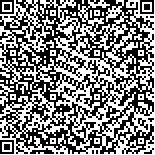| This article has been:Browse 733Times Download 667Times |

scan it! |
|
|
| DOI:10.13522/j.cnki.ggps.2021508 |
|
| Combined Effect of Drip Irrigation Amount and Straw Mulch on Growth and Yield of Cotton in Salinized Soils in Northern Xinjiang |
|
HU Qingyang, CAO Hongxia, HE Zijian, DING Bangxin, ZHANG Yi
|
|
Key Laboratory of Agricultural Soil and Water Engineering in Arid and Semiarid Areas/
Northwest A&F University, Ministry of Education, Yangling 712100, China
|
| Abstract: |
| 【Objective】Irrigation management and agronomic practice are critical to crop production in salinized soils. The objective of this paper is to investigate the efficacy of regulating drip irrigation amount combined with straw mulching in improving growth and the ultimate yield of cotton grown in salinized soils. 【Method】The field experiments consisted of four irrigation treatments with their irrigation amounts calculated as 80% of the potential evapotranspiration (ETc) that meets the physiological demand of the crop for water, added by additional water to leach the root-zone salt: 80% of ETc (W0), 120 mm+80% of ETc (W1), 240 mm+80% of ETc (W2), and 360 mm+80% of ETc (W3). In all treatments, the intra-rows were mulched by plastic films, and the inter-rows were either mulched by straw (S) or nothing (N). In each treatment, we measured plant height, leaf area index, dry matter accumulation, irrigation water use efficiency at different growth stages, as well as the cotton yield. 【Result】The growth index and yield of W0 were significantly lower than those in other treatments with or without straw mulching. Increasing the leaching irrigation amount to 240 mm increased the plant height, leaf area index, dry matter quality and cotton yield by 53.75%, 116.91%, 110.45% and 80.14%, respectively, compared with those without leaching-aimed irrigation water. After the leaching irrigation amount increased from 240 to 360 mm, no significant changes were found in the growth index and yield, and it hence reduced the irrigation water use efficiency. Keeping the leaching irrigation amount at 240 mm was optimal for both yield and irrigation water use efficiency, reaching 5 972.46 kg/hm2 and 0.92 kg/m3, respectively.【Conclusion】The field experimental results showed that irrigating 240 mm+80% of ETc combined with the intra-rows mulched by plastic films and the inter-row mulched by straw is optimal to leach the salt out of root zone while in the meantime improving irrigation water use efficiency and cotton yield in the salinized soils in northern Xinjiang. |
| Key words: drip irrigation; straw mulching; leaf area index; dry matter accumulation; seed cotton yield |
|
|